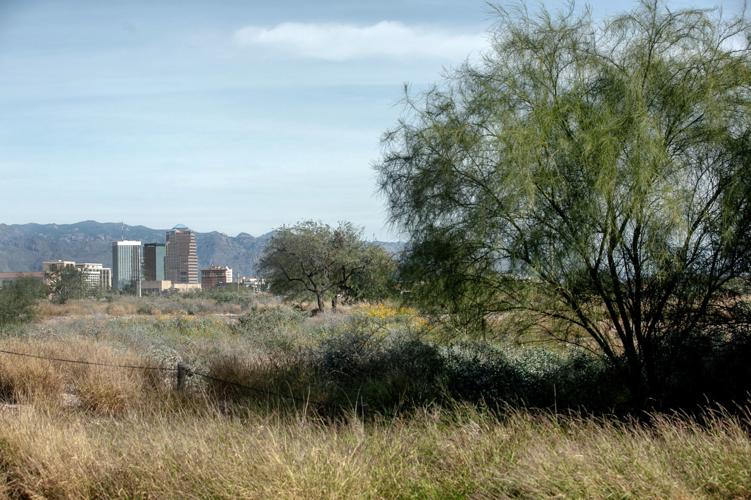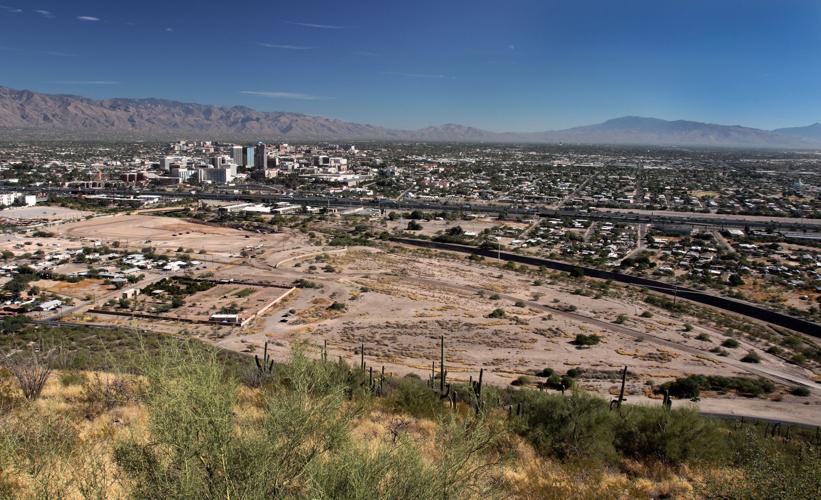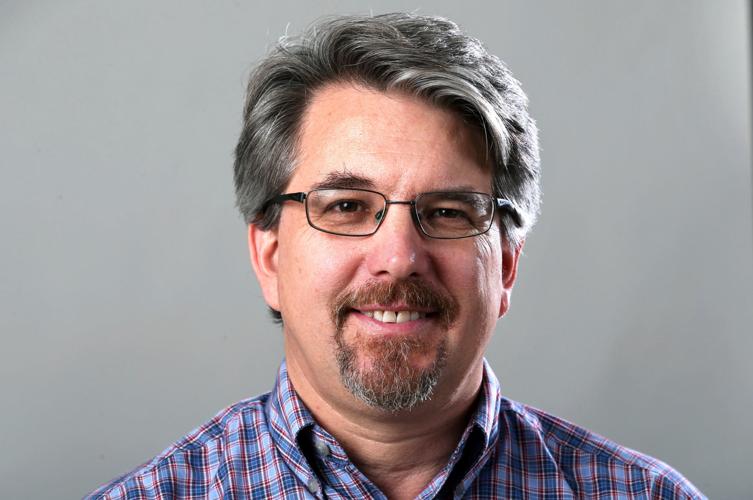This is some strong dirt.
Next month, the Pima County Flood Control District will begin removing 150,000 cubic yards of sediment from the Santa Cruz River bed just south and west of downtown.
If they put it in one place, the development pressure on a historic west-side parcel will ease. West-siders would gain a new park, cover an eyesore and lose a possible source of gentrification pressure.
If they put it in another place, though, the possibility of building and development at the site of Tucson’s birthplace remains a real, if distant, possibility. Any new building could strengthen continued development pressure that is gradually changing the west side in ways many residents don’t like.
The offer that the flood-control district has made to west-siders and to the Rio Nuevo district board is to dump the sediment it will be dredging from the floor of the river onto an old landfill. The 27-acre landfill property is at the eastern foot of “A” Mountain, south of West Cushing Street, between South Mission Road and the Santa Cruz.
It’s Tucson’s birthplace, now home to the Mission Garden project and a 60-years-closed dump. The district is willing to put the dirt there, capping the landfill, and landscape the site by pushing it into berms and swales, allowing for passive rainfall collection and a desert park.
It would save the flood-control district money and hassle, since otherwise the dirt will have to be driven up to a site near West Grant Road.
And it would help heal a wound in a site that some consider sacred.
The proposal excited neighborhood residents when the district conducted an open house on it Dec. 4. Diana Hadley, an area resident and board member of the Friends of Tucson’s Birthplace, has been promoting the idea as a great way to beautify the ugly landfill site and honor the historic nature of the place.
“It is perfect for a pedestrian, equestrian park,” Hadley said.
But the owner of the site is the Rio Nuevo district, which obtained it in the big 2013 legal settlement with the city of Tucson.
And the district board was pretty cool to the idea when they discussed it at their monthly meeting Tuesday. Chair Fletcher McCusker and Vice Chair Mark Irvin both noted that they are charged by the Legislature with generating sales-tax revenue from the deals they do. The parks and cultural facilities that Tucson voters approved as part of Rio Nuevo in 1999 are not big money-makers, even if they still have a pull.
”The days of Rio Nuevo funding a park died in 2010,” McCusker said, referring to the year the Legislature reconstituted the district and its board.
“I cannot imagine a scenario where I go to them (the Legislature) and say ‘I would like to invest in a Sonoran Desert park that has zero return on investment.’”
Irvin said, “I personally don’t have any interest in this being some big park. I think we’d be shot by those who appointed us.”
But the land doesn’t have immediate prospects for being anything else, either. A study the district commissioned found it would cost more than $30 million for them to remove the garbage from the landfill and get it ready for development. The district doesn’t have that kind of money.
So the real question comes back to whether they want to make it a little harder to develop the site in the future, by allowing the flood-control district to put new soil on the site.
McCusker was in no mood for that on Tuesday, noting that the district could be liable if methane buildup or any other landfill problems grow there.
He said there are no specific plans in the works, but if anything goes there, it should be a mix of maybe residential, retail and commercial development as well as a park.
But fellow board member Edmund Marquez, whose wife grew up on the west side, noted that the flood-control district’s proposal represents about the only option available for the eyesore landfill.
Any development on the property would be unlikely to make the neighbors happy, Marquez said. But putting the landscaped, sediment cap on the landfill wouldn’t preclude development in the future. And the likelihood of methane problems is slight, he said, citing a study of the site commissioned by Rio Nuevo.
“For me, this just comes down to pride and wanting the best for our community,” he told me after the meeting, where no decision was made.
Raul Ramirez, a vice president of the Menlo Park Neighborhood Association, said any development on the property is likely to drive up gentrification pressures in nearby neighborhoods like Kroeger Lane and Barrio Sin Nombre.
These are the creeping changes that some west-siders have complained about — powerful outsiders coming in and making the neighborhoods too expensive for the multi-generational residents already there.
The irony, Ramirez said, is “The only thing that saves the birthplace is the fact that there’s a landfill.”
Since there is no hope for developing the landfill now, the idea of capping it and landscaping it makes sense for now. If it ever makes economic sense to spend $35 million to remove the garbage, the 3-foot cap of sediment on top will not be a big additional cost.
In the meantime, the scar at Tucson’s birthplace would at least be partially healed.






